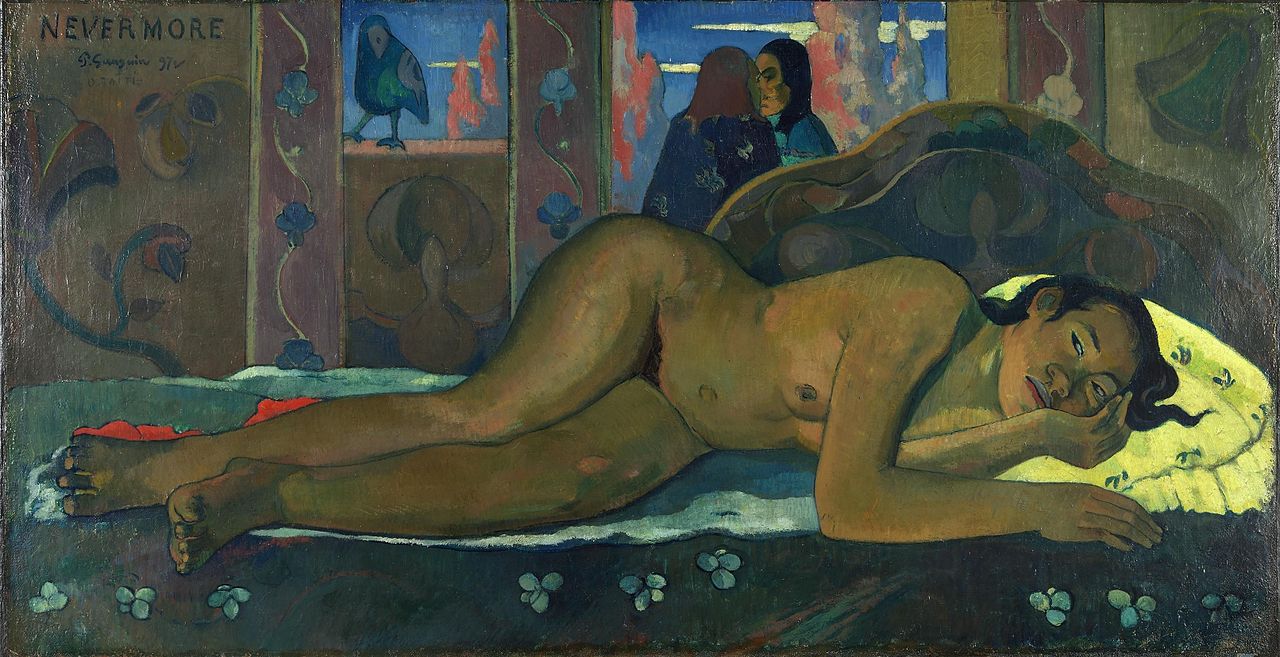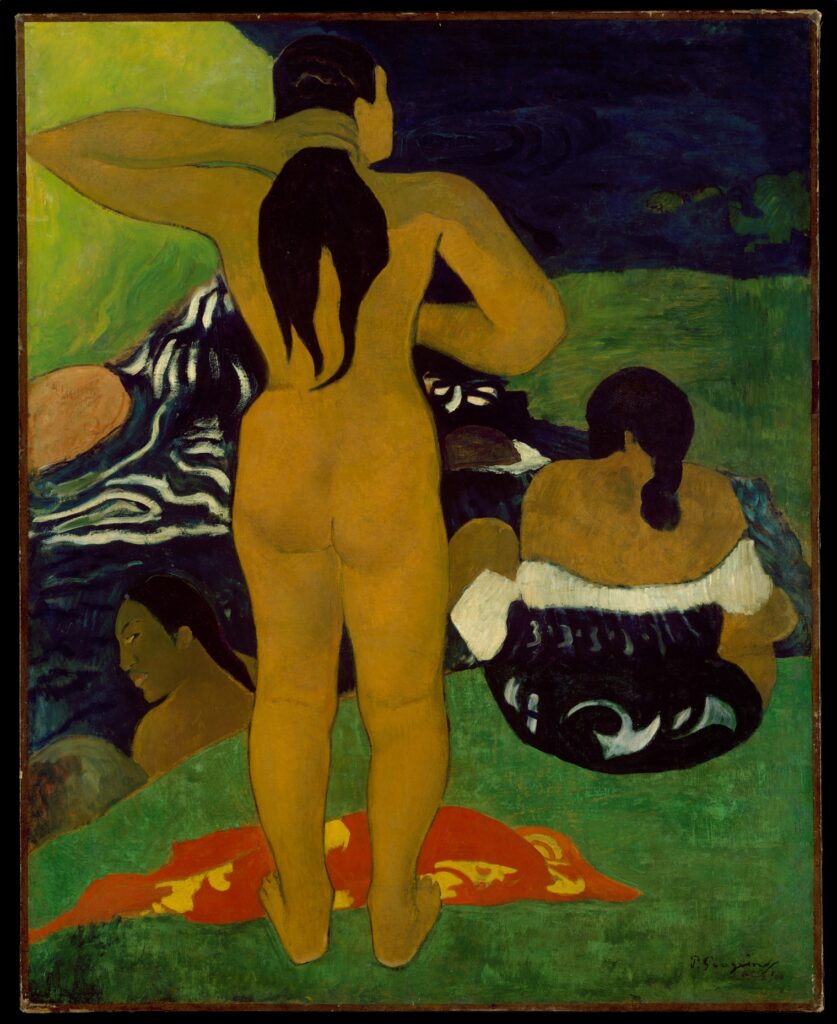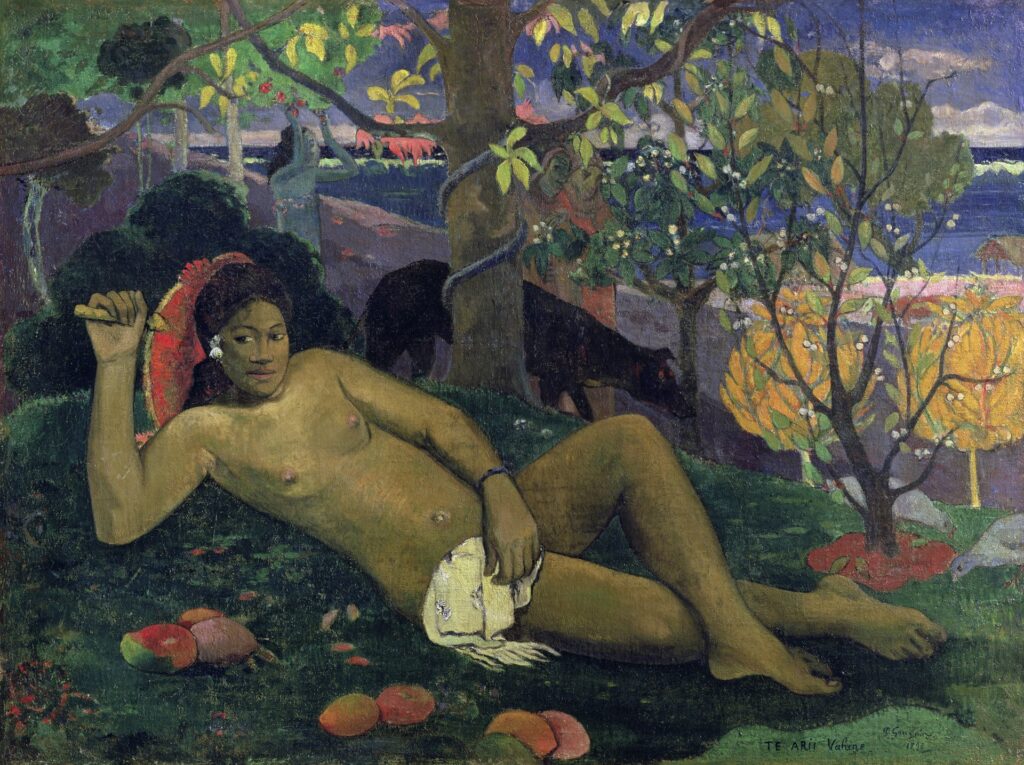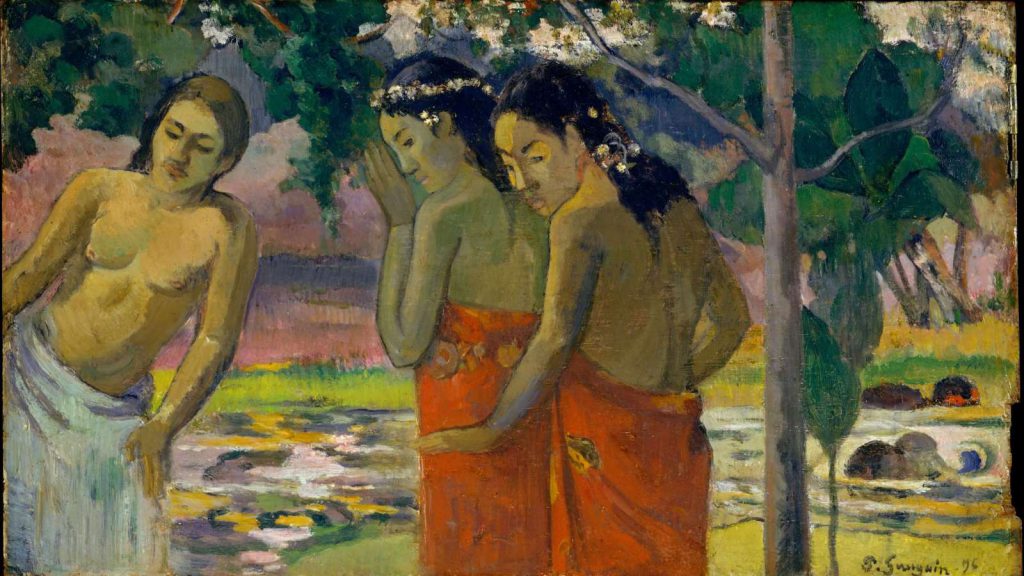Summary
Controversial Conduct of Great Artists in History.
- Paul Gauguin, notorious for exploitation.
- Edgar Degas, scandalous for anti-Semitism.
- Carl Andre and Ana Mendieta, torn apart by murder.
- Yayoi Kusama, condemned for racism.
- Eric Gill, ruined by pedophilia.
- Salvador Dali, destroyed by fascism.
- Pablo Picasso, defamed by cruelty.
Art Monsters
Art history, bathed for centuries in the abundance of white male privilege, has always seemed remarkably complacent about its monsters. The yearning for the untouchable genius does not allow for the ordinary, boring moral codes of the masses. And let’s face it, if an artist fails to pay their taxes, cheats on their partner, or drinks one too many martinis, well—they’re just like the rest of us, aren’t they? Fallible, and all too human. But what about when those “fallibilities” include brutal misogyny, rape, pedophilia, murder, virulent racism, or necrophilia?
Life Vs Art
Here, we’ll look at artists who would probably be imprisoned today. These are no everyday transgressions. There is a profound difference between being mean to your waiter and assaulting a child. Some people think we should separate the art from the artwork, but an artist’s life and work are intimately connected. Their art touches our minds and our souls. Perhaps the big question is, does the artist’s nature seep into the work and us?
The test must be whether, in the light of one’s knowledge of the artist’s attitudes outside his work, one can detect in the work traces of these attitudes.
Gaut, B., Art, Emotion and Ethics, Oxford University Press, 2007
Battle Your Demons
Artists who brave and battle their demons get a free pass here. High five to Vincent van Gogh and Mark Rothko. But what about artists who seem to relish and even enjoy their depravity. Should we lock up the work? Burn it? No, but maybe display it in context. And allow modern artists to stage responses. On the plus side, sometimes our modern eye can reclaim lost artists–in 1895, playwright Oscar Wilde was imprisoned for “gross indecency” (alleged sex acts with men) and his name became synonymous with depravity. He was a monster then, a revered icon now.
Paul Gauguin
Seedy sex tourist Paul Gauguin left his wife and children in poverty and moved to French Polynesia. He married three native children, the youngest aged 13. He fathered children with these adolescent girls and infected all of them with syphilis, as examined in this Tahitian story here. Have a stance on Gauguin as you may. Vicente Todolí, Tate Modern’s director at the time of a major Gauguin exhibition in 2010, said: “The person, I can totally abhor and loathe, but the work is the work.“
Ashley Remer is a New Zealand-based American curator and founder of girlmuseum.org, an online museum focusing on the representation of young girls in history and culture. She insists that in Gauguin’s case, his actions were so egregious that they overshadowed the work:
From a museum perspective, choosing to showcase men like Gauguin does, in its own way, support rape culture…Gauguin purposefully and consistently made the choice to exploit and assault young girls.
Edgar Degas
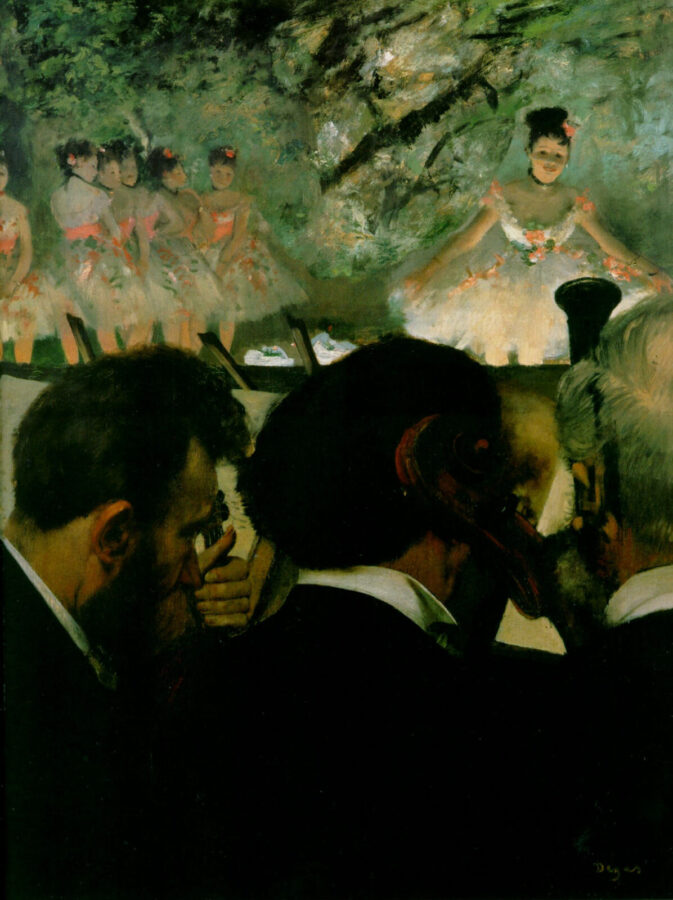
Controversial Artists: Edgar Degas, Musicians in the Orchestra, 1872, Stadel Museum, Frankfurt, Germany.
In 1894, France convicted Jewish army captain Alfred Dreyfus of selling military secrets to Germany. When Dreyfus was framed, Edgar Degas did not come to his defense. That was because Degas was one of the great Impressionists and also a zealot antisemite. He cut off contact with all Jewish people, among them a very close friend, citing the group’s “untrustworthiness.” He threw a model out of his studio after calling her Jewish (she wasn’t) and attacked the works of Jewish Impressionist Camille Pissarro. To be fair, if you are looking for a top-notch (and very influential) Impressionist, you’d be better off with Berthe Morisot.
Carl Andre

Controversial Artists: Carl Andre, Sculpture as Place retrospective, 1958–2010, Geffen Contemporary, Museum of Contemporary Art, Los Angeles, CA, USA.
American minimalist sculptor Carl Andre is more often known for the suspected murder of his wife, the contemporary earth-body artist Ana Mendieta. In 1985, she was found dead after an argument witnessed from their apartment window. The investigation went on for two-and-a-half years, initially with Andre charged with second-degree murder for Mendieta’s death. Yet in 1988, Andre was acquitted of the charge despite protests from supporters of Mendieta at his subsequent exhibitions.
And private investigations give plenty of reasons to doubt that final verdict.
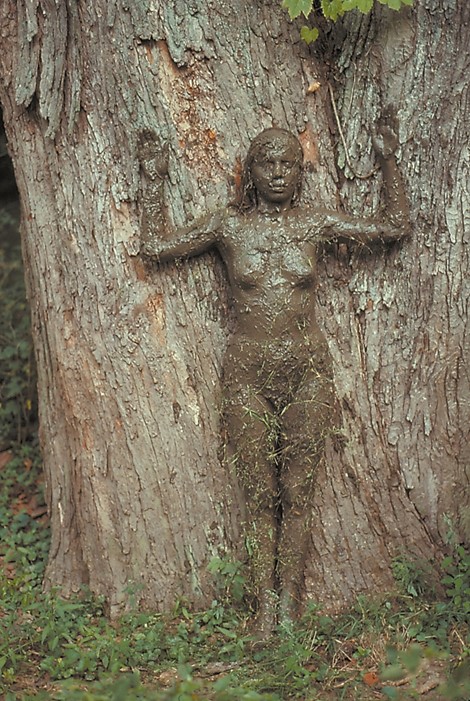
Controversial Artists: Ana Mendieta, Tree of Life, 1977, Hayward Gallery, London, UK.
Yayoi Kusama
Yayoi Kusama set an example to all artists by owning her transgressions as a racist against Black people in her 2002 autobiography. There, she stereotyped them as possessing “animalistic sex techniques” and “distinctive smell,” followed by unjustifiably lascivious details about the lips and genitals of a Black performance artist and the claim that Greenwich Village in New York deteriorated into a slum because black people had moved in. With most of her life spent insular in a Tokyo-based institution, Kusama could have hidden behind her age or her mental health. But instead, on finding her work criticized, she issued a statement saying:
I deeply regret using hurtful and offensive language in my book. My message has always been one of love, hope, compassion, and respect for all people. My lifelong intention has been to lift up humanity through my art. I apologize for the pain I have caused.
San Francisco MOMA press department October 2023
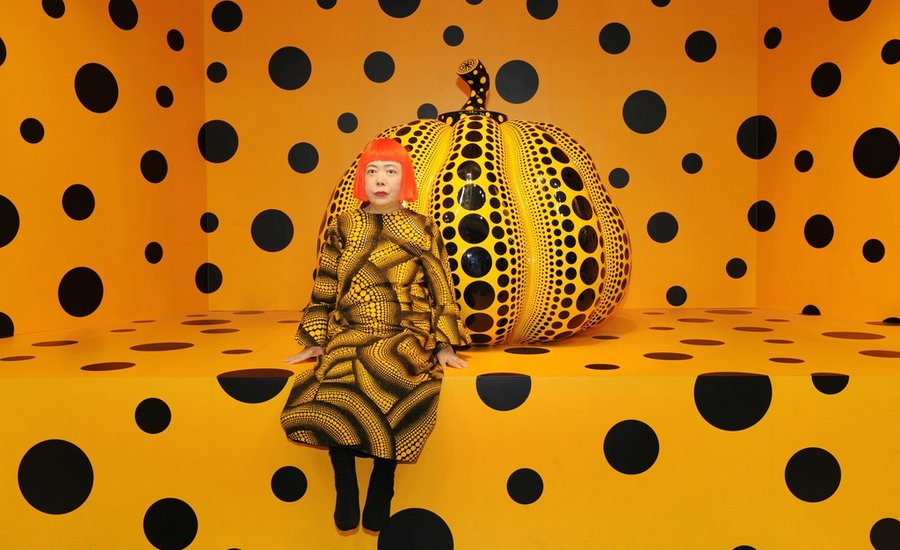
Controversial Artists: Yayoi Kusama, image from New York Botanical Garden instagram account, 2019.
Eric Gill
The downside to exploring an artist’s life is that their character can hinder the viewer from appreciating the work. This is the case with our next guest, Eric Gill. And it is beyond the fact that he is considered one of the greatest artist-craftsmen of the 20th century, with work featured on the front of the BBC’s Broadcasting House in London and the U.N.’s European headquarters.
Sculptor and printmaker Gill had three daughters who were raised in isolation within their family home in what Gill called “holy poverty.” Their home education consisted mainly of manual labor and reading scripture. It also involved sexual abuse throughout their childhood. Gill was obsessed with sex: He seduced his sisters, his housekeeper, his colleagues, and the wives of his friends. He even conducted sexual experiments on the family dog. How do we know this? He carefully recorded his activities in his diary. Gill used his children as models in his work. So, when you gaze at that delicate sketch of a pre-pubescent girl or marvel at the fine work on a marble he carved, you are looking at molested children, victims of incest. Feeling queasy? Me too.
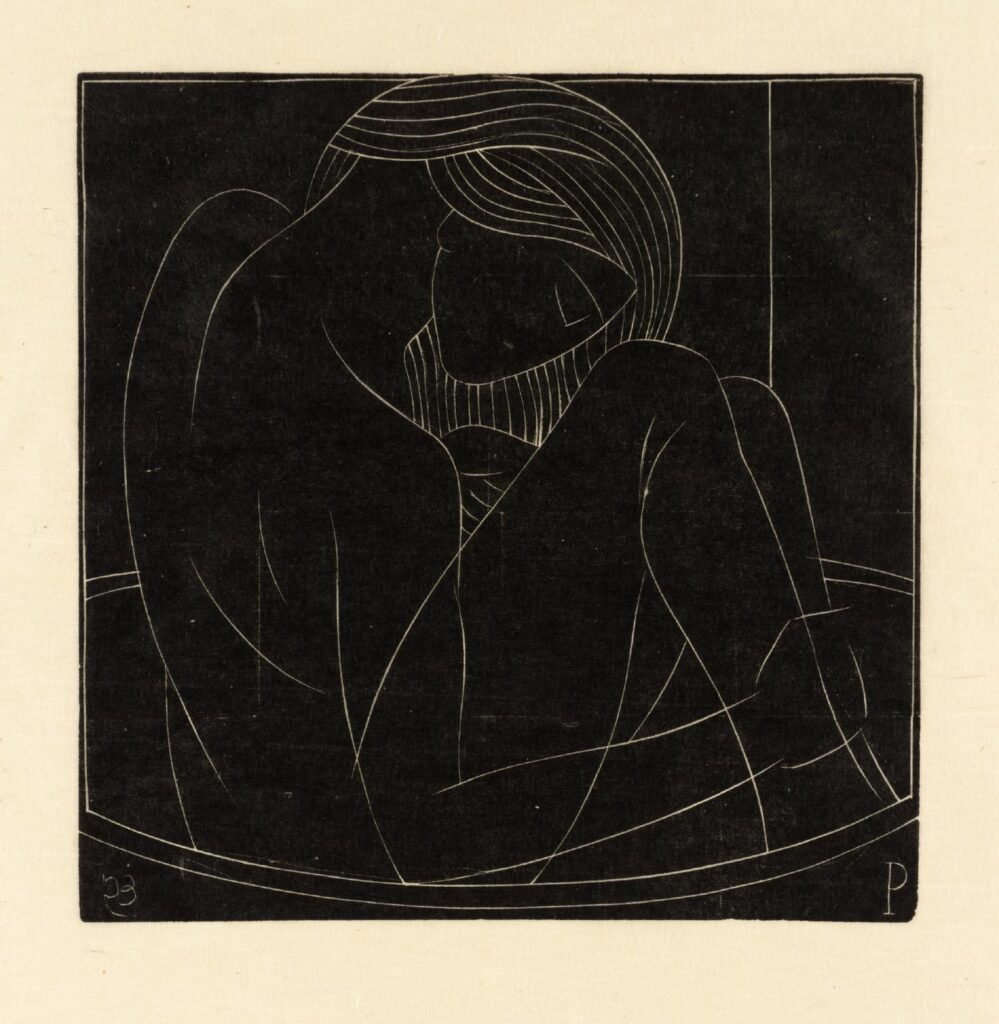
Controversial Artists: Eric Gill, Girl in Bath, 1922, Tate, London, UK.
Salvador Dalí
Where do we start with Salvador Dalí? A sadist, masochist, racist, and fascist—Dalí ticked all the boxes. He was reported to be obsessed with Adolf Hitler. Reported by himself in fact, in his autobiography The Secret Life of Salvador Dali. An entire passage of his book is devoted to his necrophilic impulses. In a letter to a fellow artist, he confessed that he found the lynchings and burnings of Black Americans sexually exciting. Not content with dead Black men, he wanted all Black men dominated: the submission to the slavery of all the colored races could be possible if all the whites united, fanatically he said. Human sacrifice and animal cruelty were other highlights, and his fascistic admiration for the brutality of Spanish dictator Franco saw him expelled from the Surrealists group.
More recently, it is the work of his wife Gala that has garnered interest. Her direct involvement in Dalí’s later work is more important than anyone has previously considered.
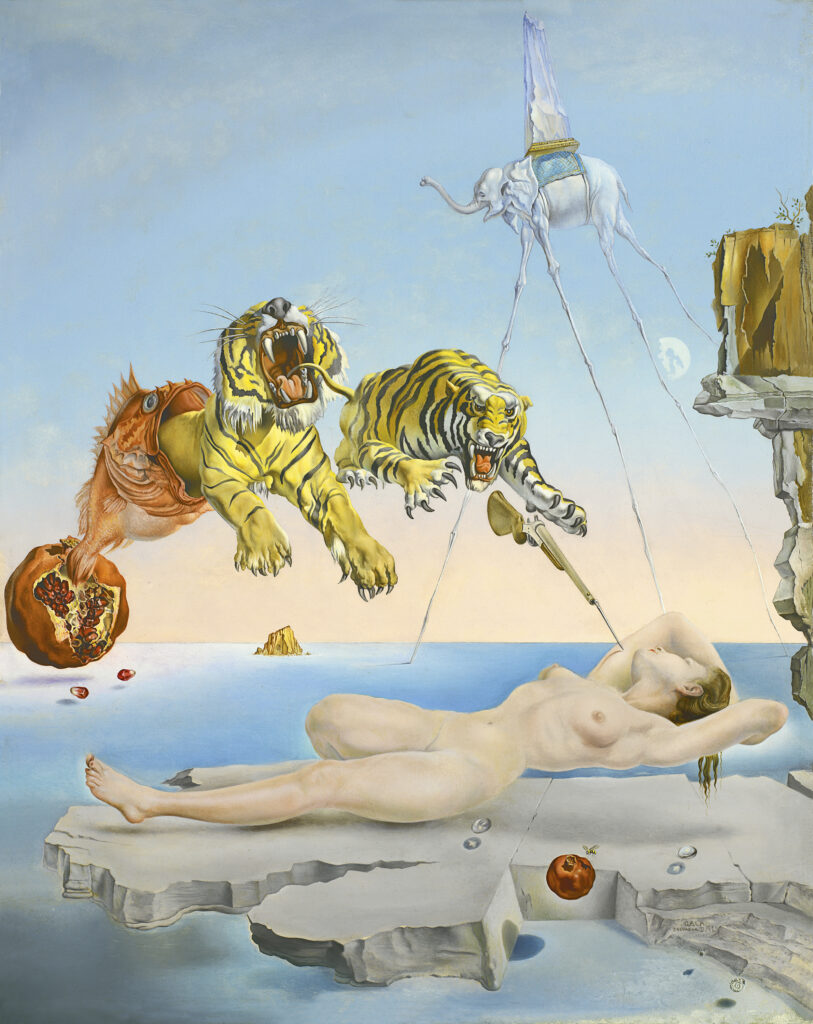
Controversial Artists: Salvador Dali, Dream Caused by the Flight of a Bee around a Pomegranate a Second before Waking, 1944, Museo Nacional Thyssen-Bornemisza, Madrid, Spain.
Pablo Picasso
An overwhelming appetite for experimentation and boundary-breaking makes Picasso one of the world’s most recognized artists. However, part of his creative process involved misogyny. He famously claimed that women were machines made for suffering, either as goddesses or doormats. Hundreds of women were to service his art and sexual desires and then discarded, as Picasso notoriously said: “Every time I change wives I should burn the last one, that way I would be rid of them.”
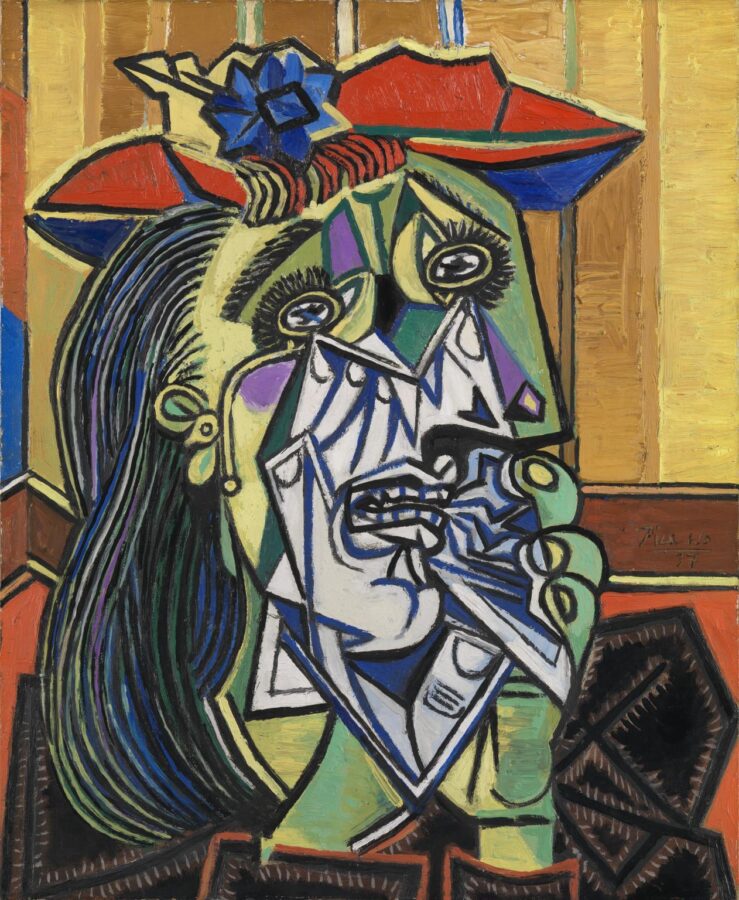
Controversial Artists: Pablo Picasso, Weeping Woman, 1937, Tate, London, UK.
Picasso and Gilot
When painter Françoise Gilot finally left Picasso after a tumultuous fight, he used his influence to destroy her career. Part of the experience informed her book, Life With Picasso, detailing the ins and outs of his cruelty. The stories and myths around his life are narrated with glee. Meanwhile, if abduction, imprisonment, and mental abuse of all forms is your thing, then Picasso is your man.
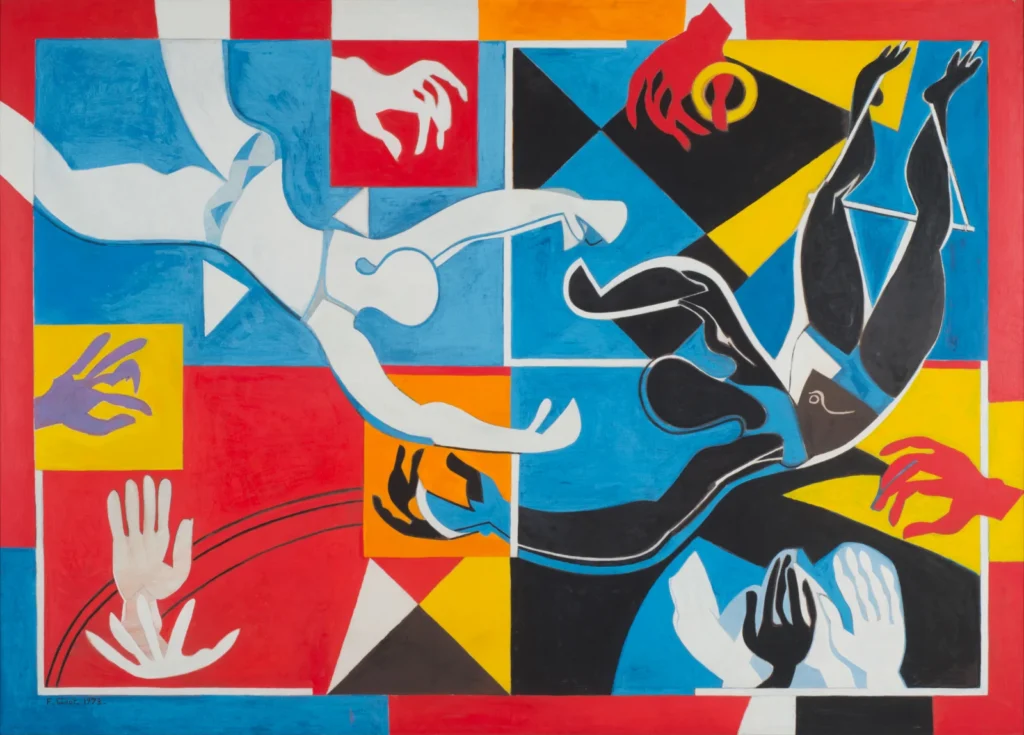
Francoise Gilot, Applause Blue Acrobats, 1973, Weinstein Gallery, San Francisco, CA, USA.
A Painting Is A Diary Page
Picasso himself said that his artwork were like the pages of his diary. Thus, in many of his works, we may see the avowed misogyny of the man and the suffering of the woman. When we go to a Picasso show, buy one of his prints, or get that lovely tea towel from the gallery gift shop, we are gifting him immunity, granting esteem (and money) to his legacy. But perhaps there is another way. When we look at Picasso’s paintings, we can engage our critical minds and think about the pains he engendered. We can look at his female subjects not through his eyes but through our own eyes. Concentrate on the subject herself. What is she saying to you? What is she asking of you?
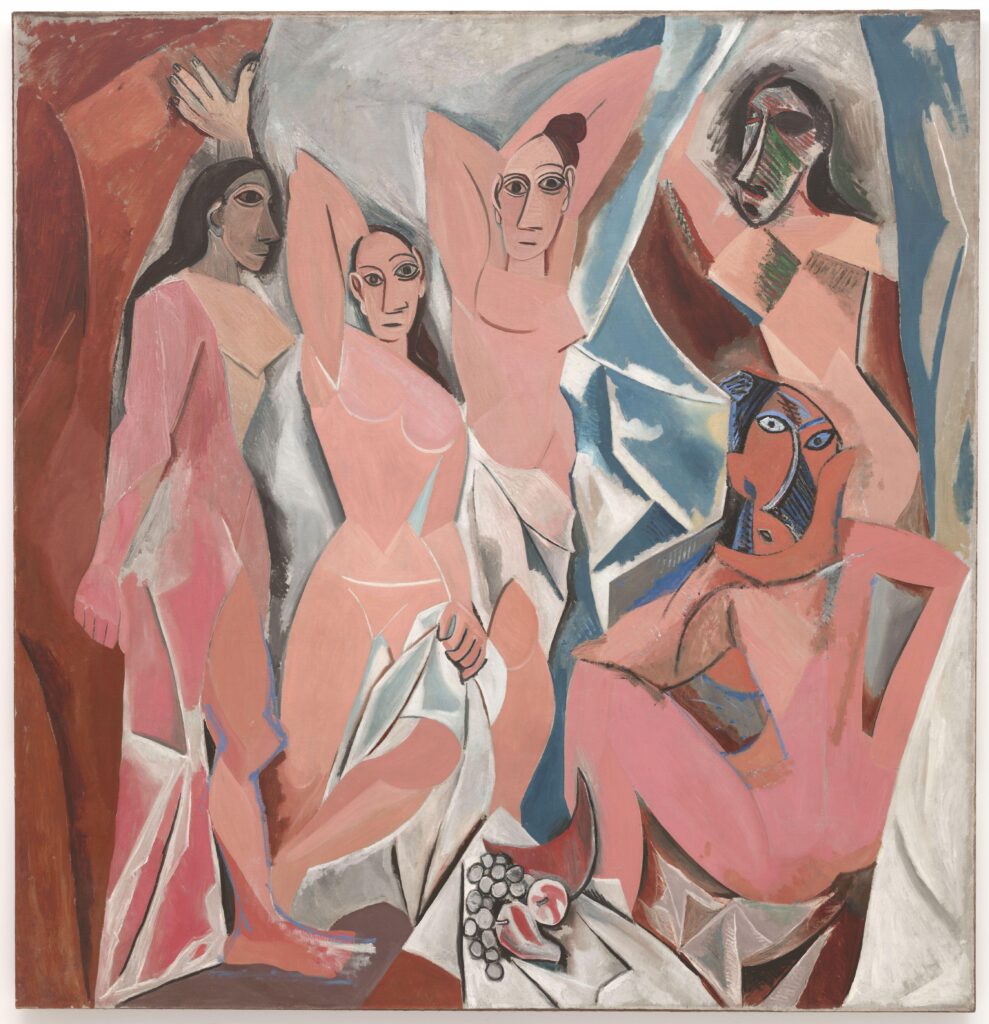
Controversial Artists: Pablo Picasso, Les Demoiselles d’Avignon, 1907, Museum of Modern Art, New York City, NY, USA.
The Art World
It’s not just individual artists, of course. Let’s not forget the systems that condone what they did. Hold to account all the galleries, museums, curators, collectors, art historians, and inheritors of artists’ multi-million-dollar estates who prop up the systems of oppression and refuse to hear the voice of the victim. These people must set the work in context.
They can engage with us in a nuanced and critical understanding of the legacy of these artists. It doesn’t have to be either an artist or a victim. Perhaps we can consider them both. And be ready to hear previously silenced voices.
It’s about people’s ability to associate the art with the artist. We’re not clones. We’re supposed to disagree. That’s what a pluralistic society does. But what we’re not supposed to do is dispose of each other because we disagree.
CBS News 28.03.21 Canceled Culture?
Critical Context
A brilliant example of challenging work and introducing context is currently underway at Tate Britain. Black British artist Keith Piper will create a new work to be shown alongside the 1927 mural The Expedition in Pursuit of Rare Meats by Rex Whistler. The mural was commissioned for the exclusive basement restaurant of Tate Britain (recently closed after public debate). The mural depicts the enslavement of a kidnapped black child being dragged behind a horse and cart with a chain around his neck while his distraught mother looks on. Despite right-wing cries of “Rex Whistler has been canceled,” his work is, in fact, being critiqued in a modern context, with an installation we can’t wait to see.
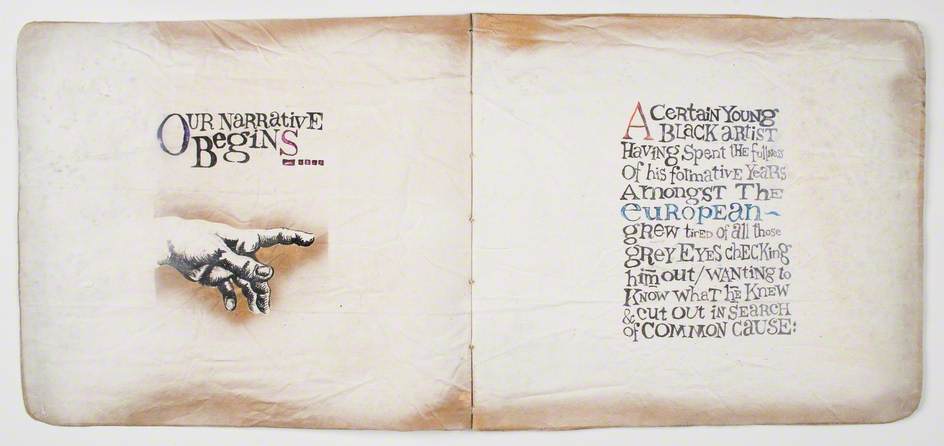
Keith Piper, An Artist’s Story, 1986, Bradford Museums and Galleries, Bradford, UK.
Witch Hunts and Snowflakes
The art world is a marketplace and it reflects our world filled with people chasing the money. Exploitation is written in through the core of our capitalist society, like letters through a stick of rock. But surely art should be the enemy of the tyrant, not its hand-maiden.
I can hear the cries of a witch hunt! cancel culture! snowflakes! But it is time to reassess the legacy of the great names. And this is exciting work! What undiscovered treasures might we find if we look beyond the big hitters? Gaze past the old white men? What fascinating discussions this could spark. I will leave you with the intelligent words of comedian and actress Sarah Silverman:
It’s messy, it’s complicated and it’s going to hurt. But it’s necessary and we’ll all be healthier for it.
I Love You America YouTube Nov 16th 2017
Let’s hear your thoughts in the comments. Mansplainers welcome!
